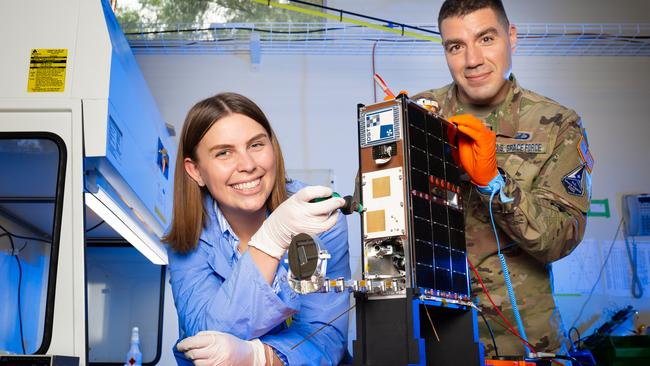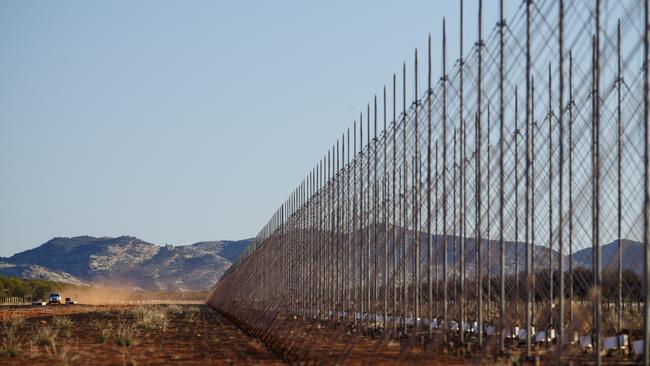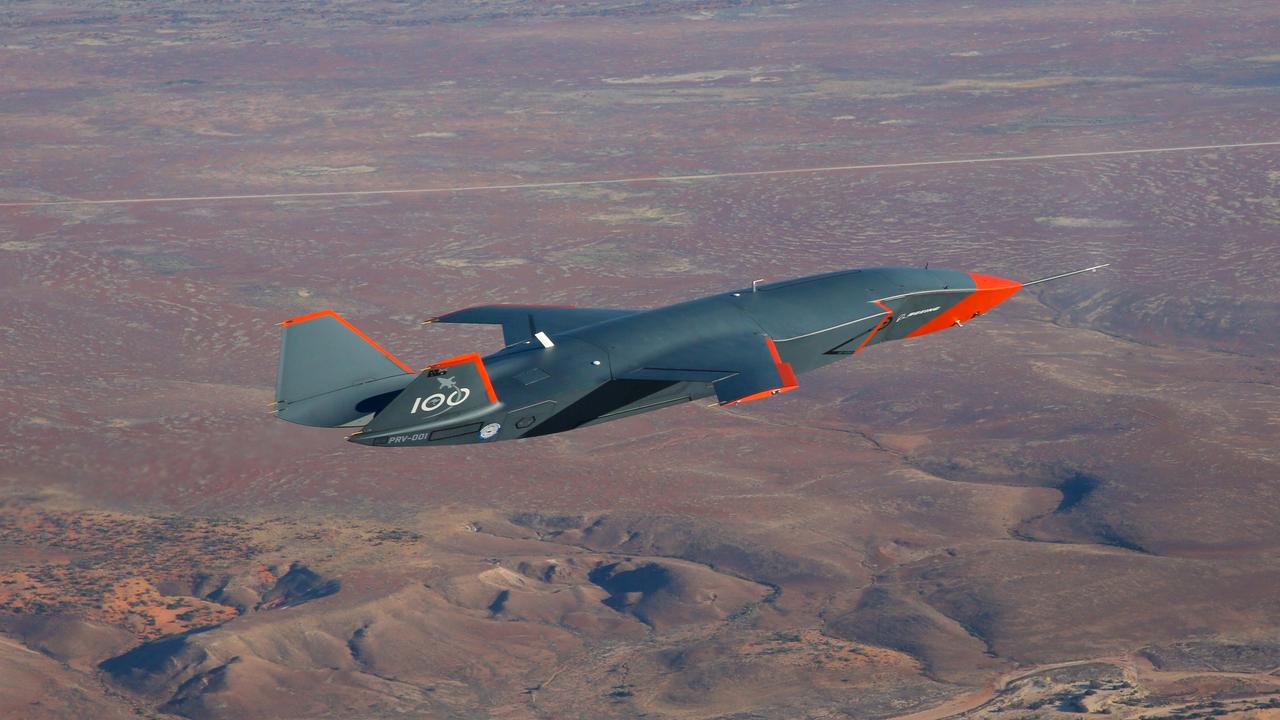Clever thinking goes a long way when the military is aiming to pack a punch
Australia needs ‘clever’ defence systems and equipment to protect the nation’s interests across a huge landmass and expanse of ocean, says Chief Defence Scientist Tanya Monro.

Australia needs “clever” defence systems and equipment to protect the nation’s interests across a huge landmass and expanse of ocean, says Chief Defence Scientist Tanya Monro. “We can’t just assume that we can build scale that will deter an adversary,” she tells The Australian. “So we have to do clever things.”
Hundreds of defence research projects are under way across Australia, some in partnerships with universities, some with the private sector, and some solely the work of the Australian Defence Force.
Broad research trends have emerged, including miniaturisation, enhanced agility and increasing use of artificial intelligence. Drones, submersibles, nanosatellites, and a huge array of sensors are characteristic of today’s defence research.
“It’s often when you get down to breakthrough technologies that allow you to miniaturise things that whole new concepts of use come into play,” Monro says, adding that miniaturisation can accelerate research. “When you get the point of being able to have such small, expendable devices that can be used in lots of different contexts, you can also develop them for different uses much more quickly. You’re not locked into that fixed infrastructure.”
These smaller pieces of equipment can provide more sensor “eyes and ears”, which means more can be done with fewer people, she says, adding these types of devices offer more agility, and more ways of responding, whereas large platforms can take a long time to develop and mature.

Monro points to the Australian-made Buccaneer Main Mission nanosatellite, launched into low Earth orbit in March, as an example of a small and nimble defence research project, in this instance in partnership with private sector organisation Inover Technologies. The nano-satellite, known as a CubeSat, weighs less than 10kg, and it will collect high-frequency measurements so scientists can better understand how radio waves travel in the atmosphere.
Also in the sensor field, research work is advancing at the University of Melbourne on developing a portable – and one day potentially wearable – infrared microspectrometer that can identify types of gas in the atmosphere.
Based on a thermal camera about the size of a sugar-cube, microspectrometers could be used in a network around a city or a sensitive area where there’s potential for chemical attacks, says physics and electronic engineering professor Kenneth Crozier, who led the research. The microspectrometer, which Monro says is a “great example of sensing capability”, could also be mounted on a drone and flown into a battlefield, Crozier adds.
“Our approach is something that isn’t as good as regular infrared spectrometers, but is orders of magnitude cheaper and much, much smaller,” he says.
Australia has a wealth of clever scientists and excellent research organisations, Monro notes, but hard choices have to be made to whittle down the list of potential projects. “I see it as my role to make sure that we shape the profile of the projects we do – to do the things that are hard to detect, hard to counter, and deliver most effect,” she adds.

A much larger sensor, the Jindalee Operational Radar Network (JORN), an over-the-horizon radar network, can provide wide-area surveillance out to 3000km and has proved to be one of Defence’s glittering success stories. In March, Canada announced it would purchase a JORN network for as much as $6.5bn.
“People often are surprised to learn that we really are ahead of the world,” Monro says. “But what does such a very totemic proposed export tell you? That they’ve done their due diligence, and we are ahead of the world anywhere in this technology. It gives us those eyes to the north and to Australia’s approaches that mean we are safer and easier to defend.”
In terms of defence logistics, collaborative research is under way at Charles Darwin University’s North Australia Centre for Autonomous Systems to perfect a large, weight-carrying drone to transport medical supplies potentially as far as 200km in conflict zones. Centre director Hamish Campbell says these drones will operate far closer to the ground than the high-flying surveillance drones, which makes them more difficult to pilot.
Drones are not expensive to manufacture, Campbell says. “So you have lots of them, they get taken out of the sky, you just replace them,” he adds. “That’s the modern way how the battlefield is emerging; that all your highly expensive, big aircraft made by your classic primes are just not being successful in the modern battlefield.”


On the cyber front, which Monro says “already has the characteristics of conflict” with nefarious actors trying to wreak cyber havoc, Defence is heavily invested in research to build more resilient cyber systems for increased security in the information domain.
One of these cyber projects is the Hybrid Moving Target Defence, an AI-driven cyber defence framework that can adapt dynamically to evolving threats, now under development at the University of Adelaide. With a Defence Trailblazer grant in hand, researchers hope to complete the work within a year or so.
Associate professor Claudia Szabo, lead of the university’s Complex Systems Research Group, says the project is a machine-learning algorithm, which is automated and deploys the defence techniques across the spectrum.
“It’s moving the target, so the vulnerability is not very well defined, and it’s not in a single spot,” she says. “So the attackers consume a lot of resources trying to find targets.”
The project she and her colleagues are working on deploys a number of these techniques, she adds, making the system increasingly resilient.
“Anywhere you have a cyber system that needs defending,” she says, “you can deploy it.”


